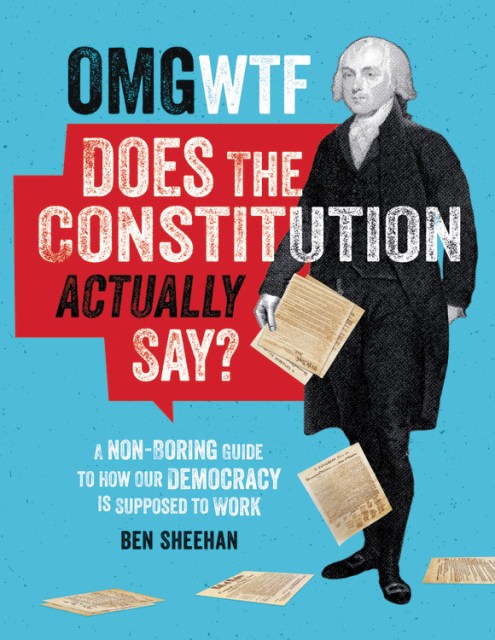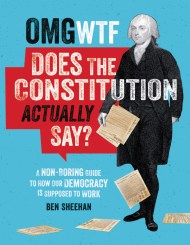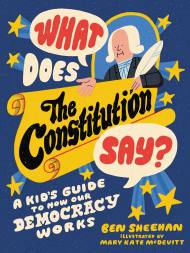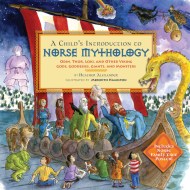Promotion
Use code MOM24 for 20% off site wide + free shipping over $45
OMG WTF Does the Constitution Actually Say?
A Non-Boring Guide to How Our Democracy is Supposed to Work
Contributors
By Ben Sheehan
Formats and Prices
Price
$25.00Price
$31.00 CADFormat
This item is a preorder. Your payment method will be charged immediately, and the product is expected to ship on or around April 14, 2020. This date is subject to change due to shipping delays beyond our control.
Also available from:
Do you know what the Constitution ACTUALLY says?
This witty and highly relevant annotation of our founding document is the go-to guide to how our government really works (or is supposed to work).
Written by political savant and entertainment veteran, Ben Sheehan, and vetted for accuracy by experts in the field of constitutional law, OMG WTF Does the Constitution Actually Say? is an entertaining and accessible guide that explains what the Constitution actually lays out.
With clear notes and graphics on everything from presidential powers to Supreme Court nominations to hidden loopholes, Sheehan walks us through the entire Constitution from its preamble to its final amendment (with a bonus section on the Declaration of Independence). Besides putting the Constitution in modern-day English so that it can be understood, OMG WTF Does the Constitution Actually Say? gives readers all of the info they need to be effective voters and citizens in the November elections and beyond.
Genre:
-
"Ben provides a totally fresh departure for thinking about the Constitution for lots of people who don't make a livelihood out of it, but need to understand it. A wonderful, breakthrough book."Jamie Raskin, U.S. representative and former professor of constitutional law at American University's Washington College of Law
-
"I wish this book existed 50 years ago when I moved to the United States. Ben's constitutional breakdown is a must-read for every current and aspiring citizen."Arnold Schwarzenegger, former governor of California
-
"Finally someone has created an easy way to teach something that's so crucial to us as citizens and as a country. Read this if you want to be smart, no pressure."Derek Waters, creator of Drunk History
-
"Ben grew up in D.C. and had a parent who worked in the U.S. Senate, which gave him the privilege of learning how the government works from a young age. Ben shares that privilege in OMG WTF Does the Constitution Actually Say? This clear, understandable translation of the Constitution immensely helps us understand WTF actually goes on in our government."Ilana Glazer, activist, actress and co-creator of Broad City
-
"In a meeting a few years ago, Ben Sheehan made the topic of gerrymandering genuinely funny to me. Ever since, he's been someone I think of when I look for examples on how to make civics more accessible. Give this book a read!"Kal Penn, actor and former associate director of the White House Office of Public Engagement
-
"Every election, millions of people do not vote simply because they don't understand how the government works. If every American had this book they would laugh, learn, and go to the polls."Kat Calvin, founder and executive director of Spread the Vote
-
"We're feeling extra smart this week after reading Ben Sheehan's OMG WTF Does The Constitution Actually Say? Truly, our self-confidence hasn't been this high since we put on concealer six weeks ago."Betches
- On Sale
- Apr 14, 2020
- Page Count
- 224 pages
- Publisher
- Black Dog & Leventhal
- ISBN-13
- 9780762498482
Newsletter Signup
By clicking ‘Sign Up,’ I acknowledge that I have read and agree to Hachette Book Group’s Privacy Policy and Terms of Use







